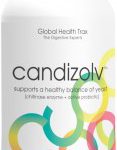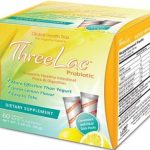Yeast. For many of us, when we read that word we may immediately think of (leavened) bread and beer, in both of which it’s an important ingredient. For those from the UK, many will think too of Marmite, the yeast-extract-based foodstuff whose taste polarises opinion. Yet, few will think of the insides of their body, specifically the digestive system, when they think of yeast, even though it commonly, nay naturally exists there. Not least one of its most notable types, candida – which, if allowed to multiply dramatically in this part of the body, can cause or at least contribute to and complicate some serious problems.
Like all yeasts, candida is a micro-organism that can be technically categorised as a fungus (like it or not). Given the fact it regularly and naturally occurs in the gut along with other bacteria, the fact it may or may not be present there is not a cause for concern. And neither is the fact it may well be present in mucous membranes, in the birth canal or on the skin1. However, it is a cause for concern – especially in the intestinal tract – when, as noted, it grows to the point that it actually overpopulates the digestive system; this leads to problems because it can cause not just damage here via infection, but also elsewhere as it inevitably spreads. The name for this condition is, yes, candida overgrowth2.
That said, it can get worse. Because, if left to its own devices, candida overgrowth can develop into systemic candida3; which, yes, is a chronic health condition likely to result in more and increasingly harmful symptoms, damaging different organs and tissues such as the kidneys and even the brain2 and potentially causing thrush (oral candidiasis) and vaginal yeast infections4. Not nice. No wonder it’s often referred to as an ‘opportunistic’ fungus; given half a chance, it’ll spread anywhere. And, like it or not, there’s actually more than 20 various kinds of candida, the most commonly occurring being candida alcibans (or C. alcibans)2. So, more specifically, what symptoms are we talking about that yeast – especially candida – can be responsible for?
Symptoms
Now, the trouble with candida overgrowth is that it’s liable to lead to symptoms that are, at the outset, suggestive of other illnesses and conditions; hence it’s often not diagnosed properly. However, if you’re suffering from many of those that follow, you should seriously consider the fact that an overabundance of candida in your digestive tract – and maybe elsewhere – could be the cause:
- Acne, eczema and psoriasis
- Anxiety, depression, irritability and mood swings
- Big cravings for sugar and processed carbs
- Bloating, constipation, gas and diarrhoea
- Fatigue and exhaustion
- Newly developed food intolerances
- Reduced libido
- Skin/ nail infections
- Vaginal yeast infection symptoms
- White coating to your tongue
Causes
So, what is it that triggers the growth of pre-existing candida in the gut flora to get out of control? Well, there are several different things that could be underlying causes, some of which are:
- Weakened immune system – seven in every 10 of your immune system’s cells are located in your gut, which is why the ‘good (healthy) bacteria’ balancing up the ‘bad bacteria’ here is so critical for effective immunity5; reduced immunity owing to too little healthy gut flora inevitably results in a rise of candida in this part of the body, which in turn could be caused by the likes of malnutrition, medication (e.g. corticosteroids) and illness (diabetes and AIDS)
- Sugary diet – mot to make things even more unpleasant, but yeast is, of course, a living organism so requires food to survive, which is where sugar comes in, especially the likes of refined sugars6, fermented sugars (alcohol)6 and carbohydrates; research suggests that refined sugars are yeast’s favourite7
- Antibiotics – this form of medication is certainly crucial at times for people (indeed, it’s saved countless lives), yet it’s easy to overdo taking antibiotics; if you’ve been guilty of this you should be wary because antibiotics are potent, as they don’t discriminate in the bacteria they kill, which means down in your gut they’ll equally kill off ‘good’ as well as ‘bad’ bacteria, thus unbalancing the gut flora and lowering your immunity8
- Chronic stress – yes, as if stress isn’t bad enough on its own, it can also help cause candida overgrowth and this is because it causes the body to release stress hormones like cortisol, which may help conserve energy in the short-term and deal better with very stressful situations, but in doing so shuts down the digestive system during each ‘fight or flight’ episode and causes inflammation, aiding the generation of a yeast-friendly environment in the gut9.
Effective diet and supplementation
Fortunately, by taking sensible steps to look after your immune system, trying to reduce stressful situations (if you can), keep down your antibiotic use and adopt an anti-candida-causing diet, you can take strong, positive steps to preventing candida overgrowth. But, when it comes to diet specifically, what does it mean you should and shouldn’t eat?
Well, taking the latter first, foods to definitely try to cut down or avoid altogether include sugar (in as many forms as possible, but definitely refined sugars); alcohol; refined carbs; grains; foods that clearly contain yeast (like Marmite) and, naturally, processed foods that are rich in unhealthy sugars.
By contrast, you’d be wise to turn your everyday diet in a high protein direction, which means the likes of organic grass-fed meat; wild fish; olive oil and non-starchy vegetables (leafy greens, asparagus, avocado and broccoli). Moreover, there are some foods out there blessed with antifungal properties that are great for killing off candida; examples include garlic; ginger root; coconut oil; oregano (and oregano oil) and onions.
And, should you be the kind of person who finds it hard to stick rigidly to diets or if you’d like to top up such a diet with even more ‘ammunition’ to combat candida, then you can turn to naturally-derived (that means totally non-synthetic) supplementation. Now, the following candida supplements – all of them available through us at The Finchley Clinic – are better for so-called candida die-off rather than a positive result via detoxification (detox) of the digestive system. So, why not take a look and give them a try?
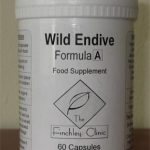 Wild Endive Formula A – a ginger-free supplement that may prove invaluable as part of a candida-balancing regime for those concerned by their body’s level of candida toxins or a possible die-off reaction.
Wild Endive Formula A – a ginger-free supplement that may prove invaluable as part of a candida-balancing regime for those concerned by their body’s level of candida toxins or a possible die-off reaction.
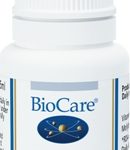 Nutrisorb Molybdenum – goes very well with Wild Endive Formula (A) for those seeking to reduce their candida levels; it helps to break down acetaldehyde, which may be the primary toxin enabling candida growth, as the latter’s believed to have an addictive quality that could drive people to increase their sugar and alcohol consume.
Nutrisorb Molybdenum – goes very well with Wild Endive Formula (A) for those seeking to reduce their candida levels; it helps to break down acetaldehyde, which may be the primary toxin enabling candida growth, as the latter’s believed to have an addictive quality that could drive people to increase their sugar and alcohol consume.
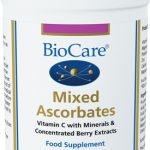 Mixed Ascorbates – provides a readily absorbable form of Vitamin C, together with bioavailable forms of magnesium, zinc, potassium, calcium and manganese to boost gut health, along with antioxidant flavonoids to combat free radicals.
Mixed Ascorbates – provides a readily absorbable form of Vitamin C, together with bioavailable forms of magnesium, zinc, potassium, calcium and manganese to boost gut health, along with antioxidant flavonoids to combat free radicals.
References:
- Huffnagle G. B. and Noverr M. C. ‘The emerging world of the fungal microbiome’. Trends Microbiol. 2013 Jul; 21 (7): 334–341. doi: 10.1016/j.tim.2013.04.002.
- Mayer F. L., Wilson D. and Hube B. ‘Candida albicans pathogenicity mechanisms’. Virulence. 2013 Feb; 4 (2): 119–128. doi: 10.4161/viru.22913.
- Grohskopf L. A. and Andriole V. T. ‘Systemic Candida infections’. Yale J Biol Med. 1996 Nov-Dec; 69 (6): 505–515.
- ‘Candidiasis’. PubMedHealth. https://www.ncbi.nlm.nih.gov/pubmedhealth/PMHT0024526/. n.p.
- Vighi G., Marcucci F., Sensi L., Di Cara G. and Frati F. ‘Allergy and the gastrointestinal system’. Clin Exp Immunol. 2008 Sep; 153 (Suppl 1): 3–6. doi: 10.1111/j.1365-2249.2008.03713.x.
- Brown K., DeCoffe D., Molcan E. and Gibson D. L. ‘Diet-Induced Dysbiosis of the Intestinal Microbiota and the Effects on Immunity and Disease’. Nutrients. 2012 Aug; 4 (8): 1095–1119. doi: 10.3390/nu4081095.
- Kovacs E. J and Messingham K. A. ‘Influence of alcohol and gender on immune response’. Alcohol Res Health. 2002; 26 (4):257–63. pmid:12875035.
- Langdon A., Crook N. and Dantas G. ‘The effects of antibiotics on the microbiome throughout development and alternative approaches for therapeutic modulation’. Genome Med. 2016; 8: 39. doi: 10.1186/s13073-016-0294-z.
- Wolkow A., Aisbett B., Reynolds J., Ferguson S. A. and Main L. C. ‘Relationships between inflammatory cytokine and cortisol responses in firefighters exposed to simulated wildfire suppression work and sleep restriction’. Physiol Rep. 2015 Nov; 3 (11): e12604. doi: 10.14814/phy2.12604.

